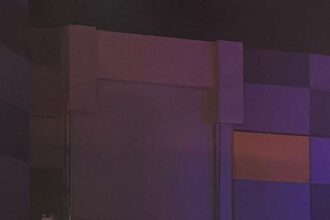The UAE is strengthening its position as a global leader in sustainable real estate, with progressive policies accelerating the adoption of green building practices, an industry expert has said.
“The UAE has set an exceptional example, with progressive policies supporting green buildings,” said Peter Templeton, president and CEO of the US Green Building Council (USGBC) and Green Business Certification Inc (GBCI).
“The country’s 2030 sustainability goals and 2050 Net Zero commitments provide a clear framework for developers,” he added. However, he noted that achieving Net Zero would require a shift beyond individual building certifications to broader, community-driven initiatives.
With over 2,500 LEED professionals, the UAE has the expertise to drive large-scale sustainable transformation. Rapid urbanisation across the Middle East and North Africa (Mena) region has made sustainability a priority for real estate development.
Founded in 1993, the USGBC is a non-profit organisation that promotes sustainable building design and operations. It developed LEED, the world’s most widely used green building certification system, which sets stringent standards for energy efficiency and environmental responsibility.
In 2024, the UAE ranked fifth globally for LEED-certified projects outside the US, with more than 130 developments covering three million square metres.
The latest version, LEED v5, introduces stricter accountability measures, requiring developers to assess greenhouse gas emissions, climate risks and human health impacts.
“For over 25 years, LEED-certified buildings have led the way in reducing inefficiencies, waste and emissions,” Templeton said. “LEED v5 provides a structured pathway towards ultra-low carbon buildings, addressing not just operational emissions but also embodied carbon in materials.”
The framework enhances decarbonisation efforts, ecosystem restoration and resilience strategies while ensuring long-term asset value. “It’s a game-changer for developers seeking to align with ESG goals while maintaining commercial viability,” he added.
While government policies have played a key role in driving green building adoption in the UAE, Templeton emphasised the need for greater private sector involvement.
“Globally, private investment has been a major force in sustainable construction, yet in the UAE, the public sector has taken the lead,” he said. “The challenge now is ensuring developers and investors fully integrate sustainability into their business strategies.”
A key concern remains cost. “Sustainable buildings can be delivered at or below traditional costs while offering long-term financial benefits,” Templeton explained. “The industry must rethink how efficiencies are incorporated into project budgets.”
Beyond individual projects, USGBC recently launched PERFORM, a programme designed to track and enhance sustainability across entire real estate portfolios. Unlike traditional certification models, PERFORM provides continuous assessment and goal setting.
“It bridges the gap between corporate sustainability targets and real-world results,” Templeton said. “With rising ESG demands, organisations in the region now have a way to measure and improve sustainability at scale.”
The financial sector is also playing a key role in accelerating the transition through green bonds and sustainability-linked loans (SLLs), which incentivise LEED-certified projects. In 2023, Mena issued $24 billion in green and sustainability-linked bonds – a 155 per cent increase from 2022, with the UAE and Saudi Arabia leading the market.
“As sustainable finance grows, developers are leveraging these tools to integrate high-performance sustainability measures,” Templeton said. “Banks are offering incentives such as interest rate reductions and higher loan proceeds for LEED-certified developments,” he added.








